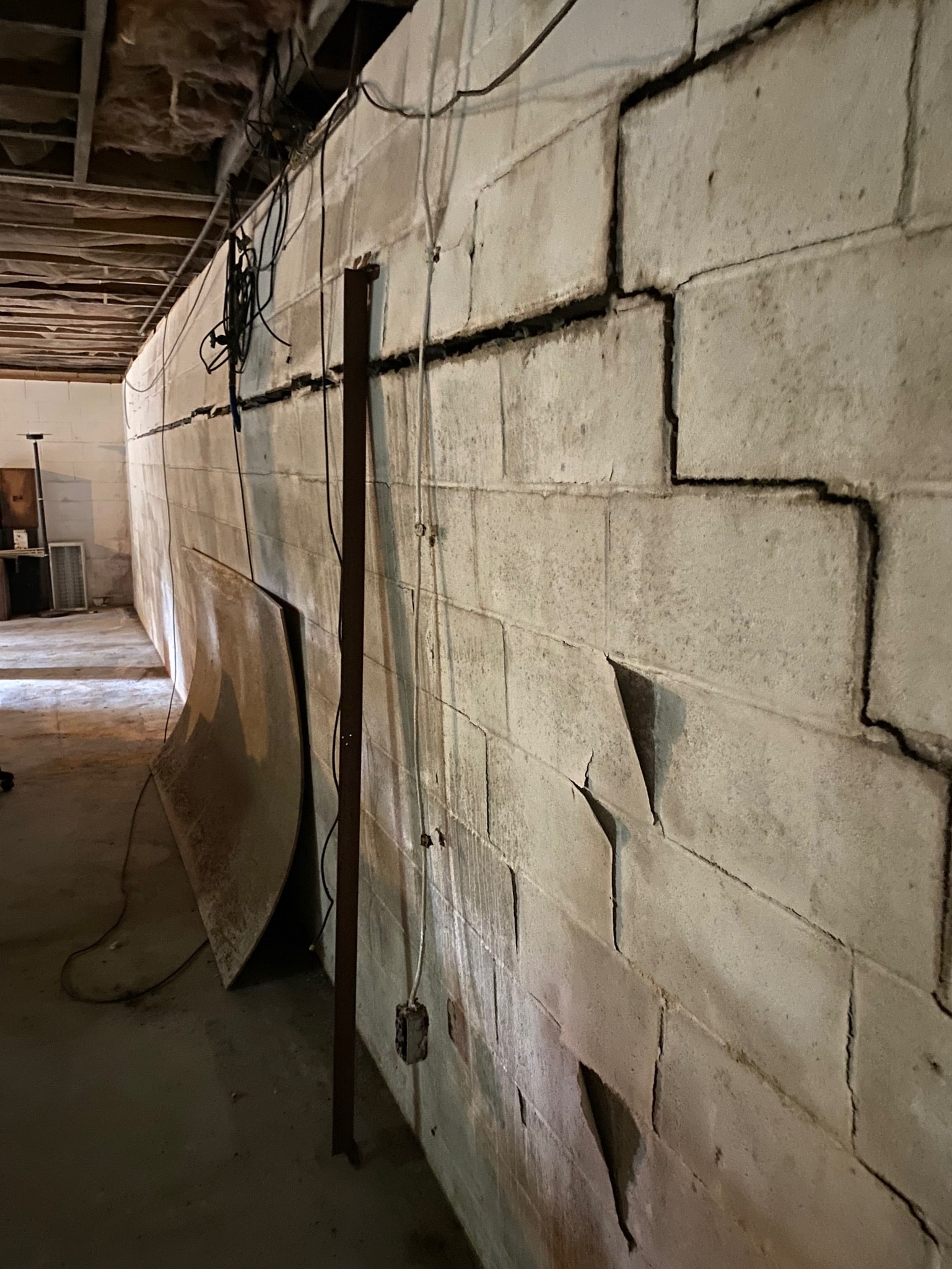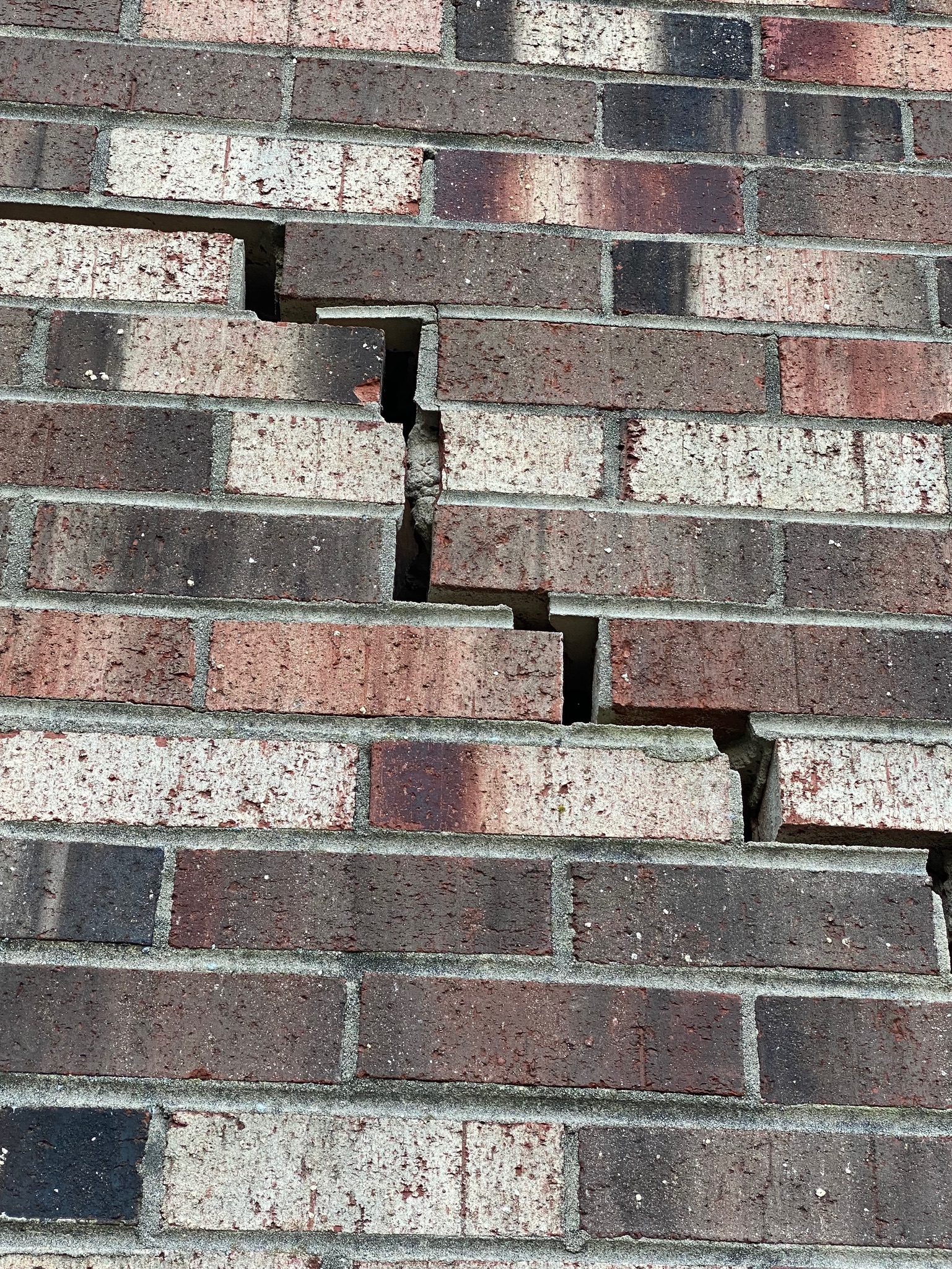You’ve probably noticed how a drought can wreak havoc on your lawn, but did you know it could also damage your home’s foundation? Yes, during dry spells, the soil around your home contracts, potentially leading to foundation cracks. You can mitigate this risk, though, with smart landscaping and moisture management techniques. So, how exactly do you prevent these costly damages? Let’s explore some effective strategies that’ll keep your home’s base solid, no matter how dry the season gets.
Key Takeaways
- Regularly inspect your foundation for early signs of damage like sticking doors, uneven floors, and wall cracks.
- Implement effective moisture management strategies such as drip irrigation and timed watering to minimize evaporation losses during drought.
- Use drought-resistant landscaping techniques, like xeriscaping and native plant selection, to reduce soil moisture demands and stabilize the foundation.
- Install moisture barriers and ensure gutters and downspouts direct water away from the foundation to prevent soil erosion and drying.
- Seek professional foundation repair services for thorough inspections, tailored repair options, and expert advice on foundation maintenance during drought.
Understanding Foundation Cracks
Understanding foundation cracks is the first step in preventing them. You need to know what causes these cracks in the first place. Many crack causes are related to the foundation types and the soil they’re built on.
Take slab foundations, for example. They’re prone to cracking due to their rigid nature. When the soil beneath them shrinks or swells, it can cause the slab to crack.
Similarly, pier and beam foundations can crack when the piers sink due to changes in soil conditions.
But it’s not just about the foundation types. Other crack causes include poor construction methods, the use of low-quality materials, and lack of proper maintenance.
Even something as simple as water seeping into the foundation can cause a crack to form.
The Impact of Drought on Foundations

This is particularly true if your home is built on clay soil, which is highly susceptible to changes in moisture levels. When it’s wet, clay soil expands. When it’s dry, it shrinks. These fluctuations can cause your foundation to shift, leading to cracks and structural damage.
Moreover, the drought also affects the groundwater. As the water table drops, so does the support for your foundation. This can lead to sinking or settling, which is another common cause of foundation issues.
Importantly, it’s not just the lack of rain that’s the problem. High temperatures also contribute to the damage. Increased evaporation rates quicken soil drying, exacerbating the effects of the drought on your foundation.
Preventing foundation cracks during a drought requires understanding these impacts and taking proactive steps to ensure the stability and health of your foundation.
Don’t wait until it’s too late.
Recognizing Early Signs of Damage
Even before the telltale cracks start appearing, there are early signs of damage you can watch for.
It’s crucial to recognize these indications as soon as they manifest, as early crack detection can save you significant repair costs down the line.
Consider these points:
- Changes in door and window operation: If your doors or windows start sticking, it’s a potential sign of foundation shifting.
- Uneven floors: You might notice your floors beginning to sag or become uneven. This could indicate foundation issues.
- Cracks in walls: Not all wall cracks indicate foundation problems, but it’s worth keeping an eye on them.
- Gaps around window frames or exterior doors: These gaps can suggest your house is settling more on one side than the other.
- Moisture in the basement or crawl space: This could mean there’s a problem with your foundation’s waterproofing.
If you notice any of these signs, a thorough damage assessment is the next step.
Remember, catching foundation damage early is key to preventing more serious problems in the future.
Don’t ignore these signs; act on them as soon as possible.
The Role of Soil in Foundation Health
You mightn’t realize it, but the health of your foundation is intimately tied to the soil it rests on.
Understanding soil composition and maintaining proper soil moisture levels are key to prevent foundation cracks during drought.
Let’s explore how soil and foundation interactions play a crucial role in preserving your home’s structural integrity.
Understanding Soil Composition
Dive into the world of soil composition, a key player in the health of your foundation. The type of soil your home rests on can significantly impact its stability. Understanding the different soil types, their properties, and how they react to various environmental factors is essential.
- Clay, known for its moisture retention and compaction abilities, can affect foundation stability due to its expansion and contraction in response to moisture changes.
- Geological formations play a role in soil stability. How the soil layers are arranged and compacted can determine how well your foundation holds up.
- Soil erosion, a result of poor drainage solutions, can gradually eat away at your foundation’s support system.
- Root systems from plants and trees can affect soil composition. They can cause soil compaction and change the soil’s ability to hold water.
- Environmental factors such as drought can affect soil properties. This can lead to changes in soil stability and potentially harm your foundation.
Understanding these aspects of soil composition helps you maintain the health of your foundation. Remember, soil isn’t just dirt—it’s a complex system that plays a vital role in your home’s stability.
Soil Moisture Levels
Building on the understanding of soil composition, let’s now focus on the role that soil moisture levels play in maintaining the health of your foundation.
You might wonder, how does soil moisture affect my foundation? It’s simple. The amount of moisture present in the soil is a critical factor in maintaining your foundation’s stability.
Soil moisture influences how soil behaves. When soil is dry, it contracts, creating gaps. This can lead to foundation movement. On the contrary, when soil has too much moisture, it swells, exerting pressure on your foundation, causing cracks or other damage.
Now, you can’t control the weather, but you can manage your soil moisture levels. The key is moisture retention. By ensuring your soil retains the right amount of moisture during dry spells, you can prevent excessive soil contraction and maintain the stability of your foundation.
Soil and Foundation Interactions
While it’s clear that soil moisture levels play a pivotal role in maintaining foundation health, it’s equally important to understand the overall interaction between soil and foundation.
Soil expansion and compaction, largely dictated by moisture retention, directly impact foundation stability. Here’s how:
- Drought effects can lead to soil compaction, reducing its ability to hold water. This means the surrounding soil can pull away from your foundation, causing it to crack.
- Clay soils, common in many regions, are particularly prone to expansion and shrinkage with changing moisture levels. This can create uneven pressure on your foundation.
- Root systems from large trees or plants can also affect soil moisture levels. Proper landscaping techniques can help manage this.
- Drainage solutions are vital in managing soil moisture. They direct water away from your foundation, preventing oversaturation or drought conditions.
- Lastly, water conservation practices can help maintain consistent soil moisture levels around your foundation, mitigating the impact of drought.
Understanding these interactions can help you prevent foundation damage during periods of drought.
Common Misconceptions About Foundation Cracks
Foundation cracks, a homeowner’s nightmare, often come with a handful of misconceptions. You might’ve fallen prey to some of these misconception myths yourself.
One common false belief is that all foundation cracks indicate serious structural problems. While it’s true that some cracks can signify major issues, in reality, minor hairline cracks are quite common in foundations and usually don’t pose a significant threat.
Another common misconception is that foundation cracks only occur in older homes. While age can contribute to foundation issues, cracks can also occur in newer homes due to factors like soil movement and inadequate drainage.
You might also believe that foundation cracks can’t be prevented, especially during drought conditions. However, foundation truths tell a different story.
With proper landscaping techniques, soil management, and moisture control, you can significantly lower the risk of foundation cracking, even in dry climates.
Essential Home Inspection Techniques
Moving from common misconceptions about foundation cracks, let’s explore some practical steps you can take to identify potential problems.
A thorough home inspection can help you catch foundation issues before they escalate. It’s not just about looking for visible cracks; it’s about understanding the condition of the entire structure.
When conducting a foundation assessment, consider these essential techniques:
- Visual Inspection: Look for obvious signs such as cracks, bulges, or shifts in the foundation.
- Water Testing: Use a hose to check for water seepage. Remember, this is about foundation assessment, not moisture management- that’s a topic for another day!
- Level Check: Use a level to detect uneven floors, a common sign of foundation issues.
- Door and Window Assessment: Difficulty opening doors and windows could indicate foundation problems.
- Wall Inspection: Look for cracks or separations in the walls, another tell-tale sign of foundation concerns.
Effective Moisture Management Strategies
You’re probably wondering how to manage moisture effectively during drought conditions.
Well, it’s all about soil hydration techniques and drought-resistant landscaping.
Let’s explore these strategies and see how they can help prevent foundation cracks.
Soil Hydration Techniques
When dealing with drought conditions, proper soil hydration techniques can be a game-changer. You mightn’t be able to control the weather, but you can certainly control how effectively your soil retains moisture.
One savvy method is the use of drip irrigation. This system delivers water directly to the root zone of your plants, reducing evaporation and promoting deep root growth. It’s a smart way to maintain soil hydration without wasting water.
However, drip irrigation is just one component of a comprehensive moisture retention strategy. Here are a few other techniques you should consider:
- Regularly adding organic mulch around plants to slow evaporation
- Using water-absorbing crystals that release water slowly
- Planting cover crops that help retain soil moisture
- Incorporating compost into soil to improve water holding capacity
- Watering early in the morning or late in the evening to reduce evaporation
Drought-Resistant Landscaping Tips
Battling a drought doesn’t mean you have to forfeit a lush, green landscape. In fact, you can use this situation to your advantage by implementing drought-resistant landscaping strategies. It’s all about using the right techniques and making smart choices.
Let’s start with xeriscaping, a sustainable gardening practice that significantly reduces the need for water. It’s not just about cacti and rocks; you can create a vibrant garden full of drought tolerant plants. Choose varieties native to your region for the best results.
Soil amendments can also play a key role in water conservation. By improving your soil’s structure and nutrient content, you’ll enhance its water-holding capacity, making every drop count.
Irrigation techniques should also be reconsidered. Drip irrigation systems, for instance, deliver water directly to plant roots, minimizing waste.
Lastly, consider climate adaptive practices. These techniques, which are based on the understanding of your local climate, can help you create a landscape that’s resilient to drought.
Here’s a summary of these strategies:
| Strategy | Description |
|---|---|
| Xeriscaping | Sustainable gardening that reduces water need |
| Soil Amendments | Enhance soil’s water-holding capacity |
| Drip Irrigation | Minimize water waste by targeting plant roots |
| Native Landscaping | Use of native plants that are adapted to local climate |
| Climate Adaptive Practices | Techniques based on understanding of local climate |
Preventative Measures for Foundation Protection
To safeguard your home’s foundation during periods of drought, proactive steps must be taken.
It’s not enough to simply react when cracks appear; you’ve got to be ahead of the game. Foundation maintenance is key, ensuring that your home stands firm for many years to come.
Consider these preventative measures:
- Regular inspections: Look for early signs of damage, like small cracks or shifts in the foundation. Taking early action can prevent larger issues.
- Moisture barriers: Install these around your home’s foundation to help maintain the right level of moisture, even during drought.
- Watering your foundation: It might sound strange, but it’s a beneficial practice. Just be sure not to overdo it.
- Gutters and downspouts: Make sure they’re directing water away from your foundation, not towards it.
- Plant placement: Keep large plants and trees a safe distance away from your foundation to prevent root intrusion.
Professional Services for Foundation Repair
Despite your best efforts to prevent foundation cracks during drought, sometimes professional help is required. This is where expert consultation comes into play. These professionals possess the knowledge and experience to diagnose and address the issue effectively. They’ll assess your foundation, identify the problem, and present you with foundation repair options suited to your particular situation.
Here’s a brief look at some services these professionals offer:
| Service | Description |
|---|---|
| Foundation Inspection | Experts will thoroughly check your foundation’s condition. |
| Foundation Repair | Based on the inspection, they’ll provide the best repair options. |
| Foundation Strengthening | They’ll further reinforce your foundation to prevent future issues. |
| Follow-up Services | Regular checks to ensure the longevity of the repair. |
They’re not just here to fix the problem and leave; they’re committed to helping you maintain a strong, crack-free foundation. Remember, prevention is always better than cure, but when prevention isn’t enough, it’s best to rely on professionals. So, don’t wait until it’s too late; reach out for an expert consultation at the first sign of trouble.
Maintaining Your Foundation Post-Drought

Post drought care is just as important as prevention during the dry season. Your foundation maintenance should include seasonal adjustments to account for climate considerations and changes in moisture retention.
Consider these steps in your post-drought foundation care:
- Implement landscaping solutions that promote moisture retention around your foundation. This could include planting native shrubs or installing a mulch bed to slow evaporation.
- Apply soil amendments to enhance the soil’s water-holding capacity. Compost or peat moss can be beneficial.
- Install or update drainage systems to control the flow of water and prevent saturation in any one area.
- Regularly conduct foundation monitoring, watching for signs of settling or cracking that could indicate problems.
- Make preventive repairs as needed. Don’t wait for small issues to become significant problems.
You’ve got this! Remember, consistent soil hydration near your foundation and strategic landscaping help prevent cracks during drought. Keep an eye out for early signs of damage and ensure proper drainage. Don’t be fooled by common misconceptions – it’s all about effective moisture management. Consider professional repair services, and continue to maintain your foundation even after the drought. With these proactive steps, you can protect your home and keep your foundation strong.

Seal-tite Basement Waterproofing Co. is a full service basement environment contractor. We carry an A+ Better Business Bureau rating. We repaired over 40,000 homes and structures in Virginia, West Virginia, Tennessee, and North Carolina. We are fully insured and licensed. We have worked in all types of locations, including residential and commercial locations, government agencies, colleges, hospitals, churches, and condo associations.
Seal-tite® offers a lifetime transferable warranty. We carry a Class A Contractor’s License and we are fully insured. Our satisfied customers range from government agencies to businesses, hospitals, colleges, churches, and thousands of homeowners. Your home is probably the single largest investment you will make in your lifetime. Don’t wait, call Seal-tite® to help make your home dry, safe and livable.

